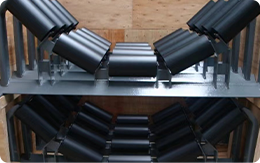 Afrikaans
Afrikaans  Albanian
Albanian  Amharic
Amharic  Arabic
Arabic  Armenian
Armenian  Azerbaijani
Azerbaijani  Basque
Basque  Belarusian
Belarusian  Bengali
Bengali  Bosnian
Bosnian  Bulgarian
Bulgarian  Catalan
Catalan  Cebuano
Cebuano  Corsican
Corsican  Croatian
Croatian  Czech
Czech  Danish
Danish  Dutch
Dutch  English
English  Esperanto
Esperanto  Estonian
Estonian  Finnish
Finnish  French
French  Frisian
Frisian  Galician
Galician  Georgian
Georgian  German
German  Greek
Greek  Gujarati
Gujarati  Haitian Creole
Haitian Creole  hausa
hausa  hawaiian
hawaiian  Hebrew
Hebrew  Hindi
Hindi  Miao
Miao  Hungarian
Hungarian  Icelandic
Icelandic  igbo
igbo  Indonesian
Indonesian  irish
irish  Italian
Italian  Japanese
Japanese  Javanese
Javanese  Kannada
Kannada  kazakh
kazakh  Khmer
Khmer  Rwandese
Rwandese  Korean
Korean  Kurdish
Kurdish  Kyrgyz
Kyrgyz  Lao
Lao  Latin
Latin  Latvian
Latvian  Lithuanian
Lithuanian  Luxembourgish
Luxembourgish  Macedonian
Macedonian  Malgashi
Malgashi  Malay
Malay  Malayalam
Malayalam  Maltese
Maltese  Maori
Maori  Marathi
Marathi  Mongolian
Mongolian  Myanmar
Myanmar  Nepali
Nepali  Norwegian
Norwegian  Norwegian
Norwegian  Occitan
Occitan  Pashto
Pashto  Persian
Persian  Polish
Polish  Portuguese
Portuguese  Punjabi
Punjabi  Romanian
Romanian  Russian
Russian  Samoan
Samoan  Scottish Gaelic
Scottish Gaelic  Serbian
Serbian  Sesotho
Sesotho  Shona
Shona  Sindhi
Sindhi  Sinhala
Sinhala  Slovak
Slovak  Slovenian
Slovenian  Somali
Somali  Spanish
Spanish  Sundanese
Sundanese  Swahili
Swahili  Swedish
Swedish  Tagalog
Tagalog  Tajik
Tajik  Tamil
Tamil  Tatar
Tatar  Telugu
Telugu  Thai
Thai  Turkish
Turkish  Turkmen
Turkmen  Ukrainian
Ukrainian  Urdu
Urdu  Uighur
Uighur  Uzbek
Uzbek  Vietnamese
Vietnamese  Welsh
Welsh  Bantu
Bantu  Yiddish
Yiddish  Yoruba
Yoruba  Zulu
Zulu Different Types of Conveyor Belt Scrapers for Efficient Material Handling
Understanding Conveyor Belt Scraper Types A Comprehensive Overview
Conveyor belts are essential components in various industries, facilitating the movement of materials efficiently. However, over time, materials can build up on the conveyor belt, leading to inefficiencies and potential damage. This is where conveyor belt scrapers come into play. Designed to enhance the performance and longevity of conveyor systems, scrapers are crucial in preventing material buildup. This article delves into the different types of conveyor belt scrapers and their applications.
1. Mechanical Scrapers
Mechanical scrapers are among the most widely used types in various industries. These devices operate using a blade or a series of blades that physically scrape the surface of the conveyor belt, removing residues and debris. Mechanical scrapers can be fixed or adjustable, depending on the application. Fixed scrapers maintain a set distance from the belt, while adjustable scrapers allow for modifications in alignment and pressure, adapting to varying operational conditions.
The design of mechanical scrapers can vary significantly, with options including single-blade, multi-blade, and even specialized shapes tailored for specific applications. For instance, multi-blade scrapers provide broader coverage, making them suitable for high-capacity conveyors.
2. Air Scrapers
Air scrapers utilize high-pressure air jets to dislodge materials stuck to the belt surface. This technology is particularly effective for finer particles or materials that can be easily air-blasted away. Air scrapers can be strategically positioned along the conveyor system, providing continuous cleaning without making physical contact with the belt.
One of the significant advantages of air scrapers is their ability to minimize wear and tear on the conveyor belt compared to mechanical alternatives. However, they require a compressed air supply and maintenance of the air system, which can add to operational costs.
3. Water Sprays and Washdown Systems
conveyor belt scraper types

Water sprays and washdown systems are another effective means of cleaning conveyor belts. These systems involve the use of high-pressure water jets or spray nozzles that effectively wash away debris and materials. Ideal for applications in the food processing or mining industries, water wash systems can be integrated into the conveyor setup.
While these systems are effective, the primary challenge lies in ensuring proper drainage and managing excess water consumption. In addition, maintenance is necessary to prevent clogging or corrosion of components.
4. Combination Scrapers
In some cases, a combination of different scraping techniques is employed to maximize efficiency. Combination scrapers typically integrate mechanical and air scraping methods, utilizing the strengths of both. By having a mechanical scraper followed by an air scraper, conveyor systems can achieve optimal cleaning results.
These combination systems are particularly suitable for applications with varying material types and conditions, allowing for flexibility and adaptability.
5. Specialty Scrapers
Certain industries may require specialized scrapers tailored to unique challenges. For instance, conveyor systems handling sticky or abrasive materials may need customized scraper materials, such as polyurethane or ceramic blades, designed to withstand wear and prevent damage to the belt. Specialty scrapers are engineered to meet specific operational requirements and ensure that the conveyor continues to function efficiently.
Conclusion
In summary, conveyor belt scrapers play a vital role in maintaining operational efficiency across different industries. By selecting the appropriate type of scraper—mechanical, air, water spray, combination, or specialty—businesses can greatly enhance the performance and lifespan of their conveyor systems. Understanding the characteristics and applications of each scraper type allows companies to make informed decisions, reduce downtime, and maintain optimal productivity in their operations. As technology advances, we can anticipate further innovations in scraper design, promising even more effective solutions for material handling challenges.
-
Revolutionizing Conveyor Reliability with Advanced Rubber Lagging PulleysNewsJul.22,2025
-
Powering Precision and Durability with Expert Manufacturers of Conveyor ComponentsNewsJul.22,2025
-
Optimizing Conveyor Systems with Advanced Conveyor AccessoriesNewsJul.22,2025
-
Maximize Conveyor Efficiency with Quality Conveyor Idler PulleysNewsJul.22,2025
-
Future-Proof Your Conveyor System with High-Performance Polyurethane RollerNewsJul.22,2025
-
Driving Efficiency Forward with Quality Idlers and RollersNewsJul.22,2025





























